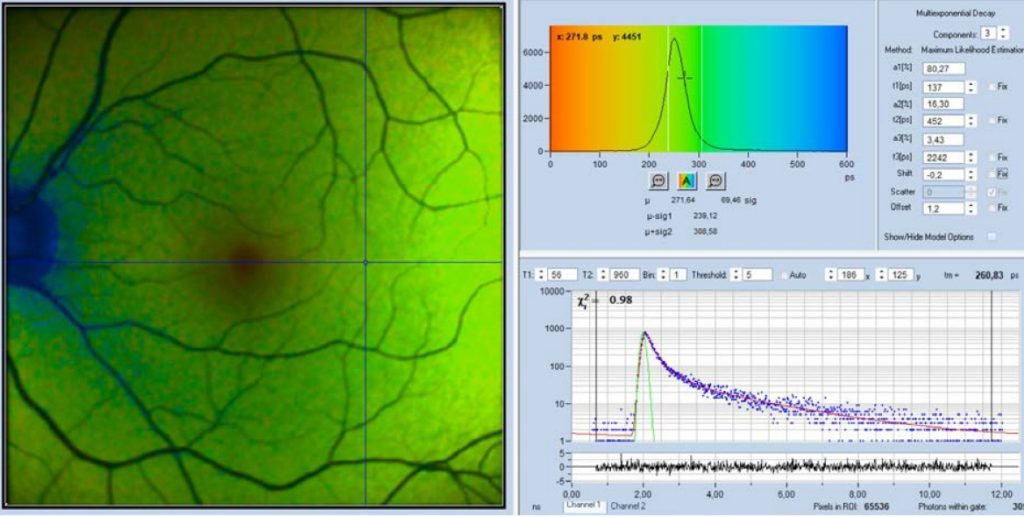Overview
This Lecture will be about:
The Fluorescence Decay Function
From Single-Exponential to Multi-Exponential Decay
Molecular Information Derived from the Decay Functions
How are FLIO Data Recorded?
Optical Principle of FLIO
TCSPC FLIM
The Photon Distribution of FLIM
From the Photon Distribution to the Lifetime Image
The Instrument Response Function (IRF)
Convolution
The Fit procedure
Accuracy of FLIM Results
Analysis of FLIO Data
Challenges of FLIO Analysis
Mistakes in Earlier Analysis Procedures
New FLIO-Analysis Procedures
IRF Modelling
Decay Modelling: Shifted-Component Model
Separating Fundus and Lens Fluorescence
Example: Cataract Patient
Analysing FLIO Data with SPCImage NG
Entry-Level Functions
Model Definitions
Calculation of Lifetime Images
GPU Processing
Display of Results
Higher-Level Functions
Images of Decay Components
Ratios of Parameters from Different Wavelength Channels
Image Segmentation
About the speaker
Wolfgang Becker is specialist in time-resolved optical detection techniques. He obtained his PhD 1979 in Berlin, Germany. Since 1993 he is the head of Becker & Hickl GmbH in Berlin. His field of interest is development and application of advanced Time-Correlated Single Photon Counting techniques. He started to develop multi-dimensional TCSPC techniques in 1989, and is the originator of the TCSPC FLIM technique that is now widely used in laser scanning microscopes. He is author of the bh TCSPC handbook, now out in the 8th edition, and of ‘Advanced Single Photon Counting Techniques’, Springer, 2005, and editor of ‘Advanced Single Photon Counting Applications’, Springer, 2015. He likes cats, skiing and beach volleyball.




